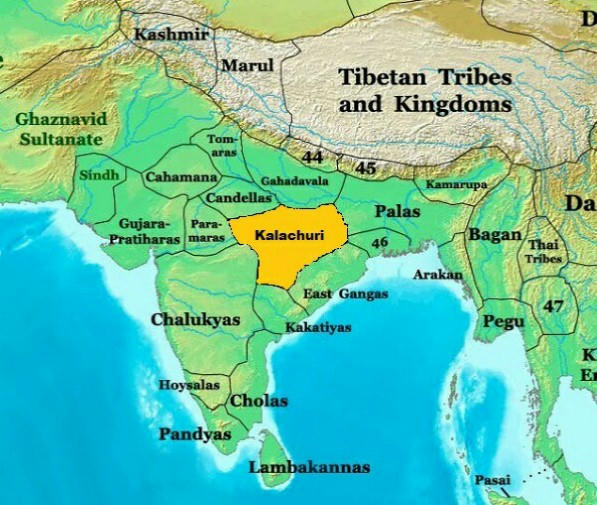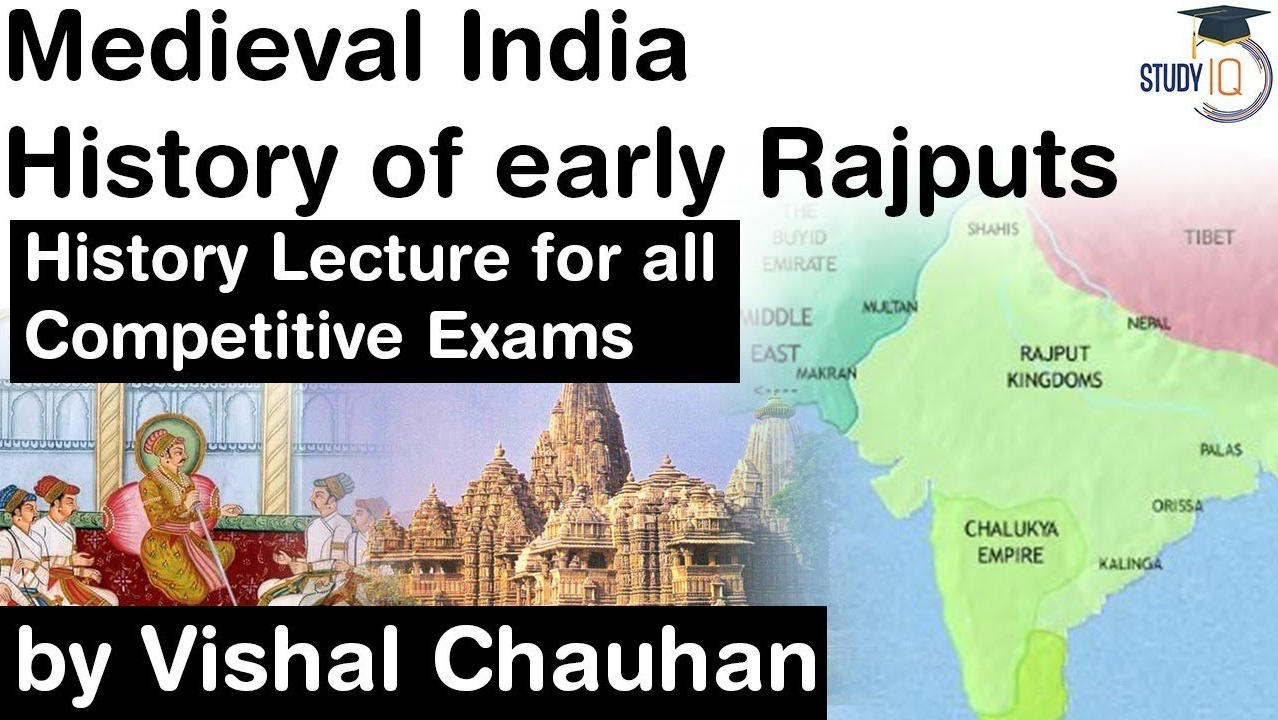Table of Contents
Introduction:
- The Rajputs rose to political importance in the 9th and 10th centuries.
- They were divided into a number of clans of which four claimed a special status.
- These were the Pratiharas, the Chauhans, the Chalukyas( Solankis) and the Parmars.
- These 4 clans claimed to be the Agnikula or fire family.
- According to a legend these clans claimed their descent from a mythical figure that arose out of a vast sacrificial fire pit near Mount Abu in Rajasthan.
- On the Eve of the Turkish invasion, besides these Agnikula Clan other Rajput clans were also ruling different regions of northern and central India.
- The chief among them were Chalukyas of Anhilvara, Chauhans of Ajmer, Gahadavalas of Kannauj, Tomars of Delhi, Chandella of Bundelkhand, Kalchuris of Chedi, Sena Kingdom of Bengal.

Tomars of Delhi:
- The Tomara( also called Tomar) was an Indian dynasty, which ruled parts of present day Delhi and Haryana during the 9th 12th century.
- Initially being feudatories of the Gurjara-Pratihara dynasty, the Tomaras by around the 10th century carved out an independent Kingdom for themselves around Delhi.
- King Anangapal Tomar is accredited to establishing ‘Lal Kot’, which was basically a walled Citadel serving as the capital of Tomars in 736 CE.
- Chauhan King, Prithviraj Chauhan captured ‘Lal Kot’ in 1180 CE and made extensive renovations to the structure and made it into a massive 13 gated Fort- Qila Rai Pithora.
- Anangpal Tomar is often described as the founder of Delhi, built the Citadel some 10 kilometers from Surajkund.
- Surajkund reservoir is said to have been commissioned by a Tomar King named Surajpal.
- Surajkund( literally means the Lake of the Sun) is an ancient reservoir of the 10th century, located on the southern Delhi Ridge of Aravalli range in the Faridabad city of Haryana.



Chauhans of Ajmer:
- The earliest extant inscription that describes the origin of Chauhans is the 1119 CE Sevadi inscription of Ratnapal, a ruler of the Naddula Chahamana dynasty.
- According to this inscription, the ancestors of Chahmanas was born from the eye of Indra.
- According to the 1170 CE Bijolia rock inscription of Someshvara, the early Chahamana king Samantaraja was born at Ahichchhatrapura in the gotra of sage Vatsa
- The word Chauhan is the vernacular form of the Sanskrit term Chahmana.
- The Chahmanas originally had their capital at Shakambari( present today Sambhar Lake town).
- Until the 10th century, they ruled as Pratihara vassals.
- When the Pratihara power declined after the tripartite struggle, the Chahmana ruler Simharaja assumed the title Maharajadhiraj.
- In the early 12th century, Ajayaraja II moved the kingdom’s capital to Ajayameru( modern Ajmer).
- Thus, the Chahamana rulers are also known as Chauhans of Ajmer.
- The Chahamanas fought several wars with their neighbors, including the Chalukyas of Gujarat, the Tomars of Delhi, and Parmars of Malwa.
- From the 11th century onwards, they started facing Muslim invasions, first by Ghaznavids, and then the Ghurids.
- The Chahamana Kingdom reached its zenith under Vigraharaja 4th in the mid 12th century.
- The most famous among the Chauhan rulers was Prithviraj III, who ascended the throne at Ajmer at the young age of 11, in or about 1177 CE.
- It is assumed that he took the reigns of administration is in his hands at the age of 16, and immediately commenced a vigorous policy of expansionism at the cost of smaller states in the Rajasthan.
- The most famous expedition, however, was the one against the Chandelas of Khajuraho and Mahoba.
- The fight in which the famous Warriors, Alha and Udal, died fighting to save Mahoba has been immortalized in Hindu epics.
- His Kingdom included major parts of present-day Rajasthan, Haryana, and Delhi; and possibly some parts of Punjab and Uttar Pradesh.
- The dynasty’s power effectively ended in 1192 CE, when the Ghurids defeated Prithviraj III in Second battle of Tarain.

The Gahadavala Dynasty:
- The Gahadavala dynasty was among the rulers of Indians of continent, that ruled parts of the present Indian states of Uttar Pradesh and Bihar, during the 11th and 12th centuries.
- Their capital was located in Varanasi in the Gangetic Plains, and for a brief period, they also controlled Kanyakubja( modern Kannauj).
- Chandradeva, the first monarch of the dynasty, established a sovereign Kingdom sometime before 1090 CE, after the decline of Kalchuri of Tripuri.
- The Kingdom reached its zenith under his grandson Govindchandra who annexed some of Kalchuri territories, warded off Ghaznavid raids, and also fought the Palas.
- In 1194 CE, Govindchandra’s grandson Jayachandra was defeated by the Ghurids, which effectively ended the dynasty’s Imperial power.
- The Kingdom ceased to exist when Jaychandra’s successor were defeated by the Delhi sultanate in the 12th century.
- The political developments in the North, western central India were considerably influenced by the changes taking place in the contemporary West and Central Asia.
- The coming of the Arabs( 7th 8th centuries), first as traders and later as invaders, had already made a substantial impact in India.


























 WhatsApp
WhatsApp